
When embarking on the significant investment of purchasing a vehicle, the old adage “forewarned is forearmed” resonates with particular importance. This is especially true in the current economic climate, where escalating car costs, substantial inflation, and tariff turbulence have made exercising caution more crucial than ever before. Savvy consumers understand that a vehicle’s initial price tag is only part of the equation; long-term reliability and maintenance expenses play an equally vital role in its true cost of ownership.
In the pursuit of helping consumers make informed decisions, we turn to the expertise of Jacob Carter, proprietor of Engine Rev Up, a respected blog dedicated to the intricate world of car maintenance and repairs. Carter’s extensive experience highlights a critical insight: certain vehicle models demand more frequent repairs and are prone to breaking down prematurely, often after they surpass the significant milestone of 100,000 miles. This mileage threshold frequently marks a tipping point for many vehicles, shifting from dependable daily drivers to regular visitors at the repair shop.
Drawing upon these valuable insights, this article delves into a curated list of vehicles that warrant a second thought if durability and long-term reliability are high on your priority list. We aim to equip you with the knowledge to navigate the complex automotive market, identifying models that, despite their initial appeal, might leave you facing unexpected and costly repairs down the road. Understanding these potential pitfalls is key to ensuring your next vehicle purchase offers peace of mind rather than frustration.

1. **Nissan Altima**The Nissan Altima is widely recognized as a midsize sedan offering reliable performance, a comfortable interior, and advanced safety features. This blend of attributes has historically made it a popular choice for many drivers seeking a practical and efficient daily vehicle. However, its reputation for consistent performance can be challenged by certain mechanical shortcomings that emerge over time.
According to Jacob Carter, a notable concern with numerous Altima models is the continuously variable transmission (CVT). This transmission type “tends to experience premature failure, frequently occurring shortly after reaching the 100,000-mile mark.” This issue is a significant point of consideration for potential buyers, as it can severely impact the vehicle’s longevity and require substantial financial outlay.
The implications of a failing CVT are far-reaching, potentially leading to inconsistent power delivery, sluggish acceleration, or even complete transmission failure. Carter stated that “This issue can lead to expensive repairs,” highlighting the financial burden owners might face. Beyond the transmission, other reports indicate that the Altima has been known to suffer from engine issues, particularly with its four-cylinder engine, leading to problems such as excessive oil consumption and engine knocking.
Furthermore, some Altima models have experienced issues with their braking systems, including premature brake wear. Even the interior components have been noted for a lack of durability, with signs of wear such as peeling trim and damaged upholstery appearing over time. Despite its initial appeal, these mechanical problems and subpar durability aspects collectively position the Nissan Altima as a car that often breaks down too easily.
Car Model Information: 2020 Nissan Altima 2.5 SL
Name: Nissan Altima
Caption: 2024 Nissan Altima SR (L34; US)
Manufacturer: Nissan
Aka: Nissan Bluebird
Production: 1992–present
Class: Compact car
Predecessor: Nissan Bluebird,Nissan Stanza
ModelYears: 1993–present
Categories: 2000s cars, 2010s cars, 2020s cars, All-wheel-drive vehicles, All Wikipedia articles written in American English
Summary: The Nissan Altima is a mid-size car manufactured by Nissan since 1992. It is a continuation of the Nissan Bluebird line, which began in 1955.
The Altima has historically been larger, more powerful, and more luxurious than the Nissan Sentra but less so than the Nissan Maxima. The first through fourth-generation cars were manufactured exclusively in the United States and officially sold in North and South America, along with the Middle East and Australia. For other markets, Nissan sold a related mid-size sedan called the Nissan Teana which was between the Altima and Maxima in terms of size. In 2013, the Teana became a rebadged version of the fifth-generation Altima.
The name “Altima” was originally applied to a top trim line of the Nissan Leopard for the Japanese market in 1986, and then to the Nissan Laurel Altima mid-size car sold in Central America and the Caribbean before 1992. In 1992, Nissan discontinued the Stanza which was a Nissan Bluebird clone, replacing it with the US-built Altima, while remaining a compact car. The first Altima was produced in June 1992, as a 1993 model. All Altima models for the North American market were built in Smyrna, Tennessee, until June 2004, when Nissan’s Canton, Mississippi plant also began producing the model to meet high demand.
Get more information about: Nissan Altima
Buying a high-performing used car >>>
Brand: Nissan Model: Altima
Price: $15,990 Mileage: 93,989 mi.
Read more about: Beyond the Badge: Uncovering the Hidden Flaws in 14 Fan-Favorite Vehicle Models
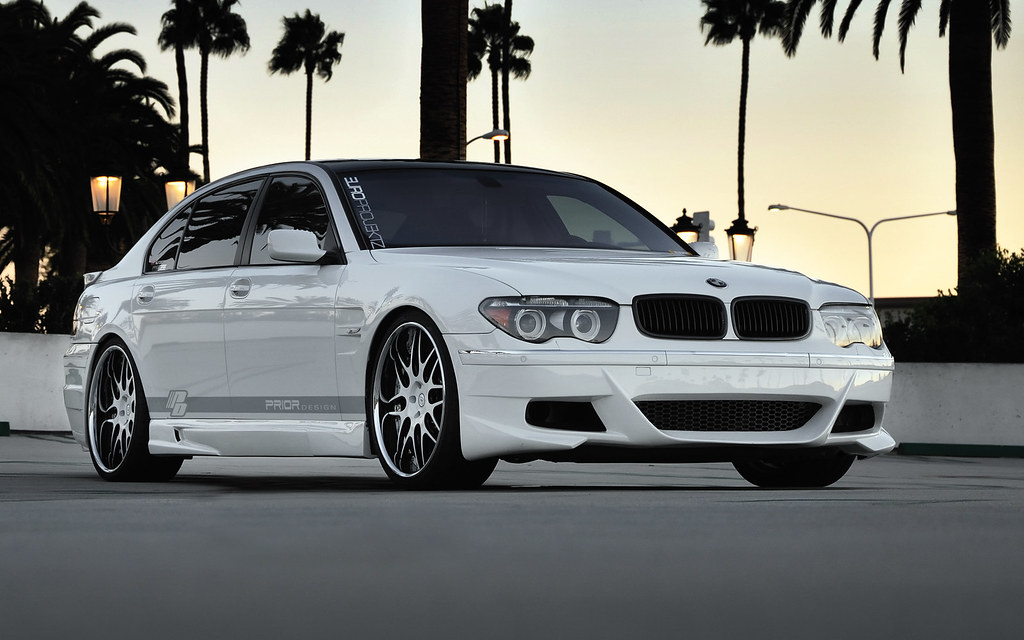
2. **BMW 3 Series**The BMW 3 Series stands as a luxury compact car, celebrated for its sporty driving dynamics, upscale interior, and innovative technology features. It embodies a blend of performance and sophistication that appeals to many discerning drivers. The driving experience it offers is often described as engaging, making it a desirable option in its segment.
However, the allure of the BMW 3 Series comes with a significant caveat regarding its long-term maintenance. According to Carter, these cars “demand high maintenance costs,” which can be a substantial factor for owners beyond the initial purchase price. The sophisticated engineering and luxury components, while contributing to its performance, also make repairs more intricate and expensive.
A particular point of concern highlighted by Carter is that a “significant number of them necessitating engine or electrical repairs around or shortly after reaching 100,000 miles.” This indicates a potential mileage tipping point where critical and costly components begin to fail, transforming the ownership experience from luxurious to financially demanding. These types of repairs can be extensive, often requiring specialized expertise and parts.
Prospective buyers should therefore factor in these high potential maintenance costs into their budget. While the BMW 3 Series offers an exhilarating driving experience and a premium cabin, its propensity for expensive engine and electrical issues after the 100,000-mile mark means that prioritizing durability requires a careful reassessment of this model.
Car Model Information: 2024 Ford Mustang EcoBoost
Name: BMW 3 Series
Manufacturer: BMW
Production: 1975–present
Class: Compact executive car
Predecessor: BMW 02 Series
Categories: 1970s cars, 1980s cars, 1990s cars, 2000s cars, 2010s cars
Summary: The BMW 3 series is a line of compact executive cars manufactured by the German automaker BMW since May 1975. It is the successor to the 02 series and has been produced in seven generations.
The first generation of the 3 Series was only available as a 2-door saloon; the model range expanded to include a 4-door saloon, 2-door convertible, 2-door coupé, 5-door estate, 5-door liftback (“Gran Turismo”; discontinued in 2019) and 3-door hatchback body styles. Since 2013, the coupé and convertible models have been marketed as the 4 Series; these styles no longer being included in the 3 Series.
The 3 Series is BMW’s best-selling model line, accounting for around 30% of the BMW brand’s annual total car sales, and has won numerous awards throughout its history. The M version of the 3 series, M3, debuted with the E30 M3 in 1986.
Get more information about: BMW 3 Series
Buying a high-performing used car >>>
Brand: BMW Model: 3 Series
Price: $27,678 Mileage: 24,236 mi.
Read more about: Beyond the Badge: Uncovering the Hidden Flaws in 14 Fan-Favorite Vehicle Models
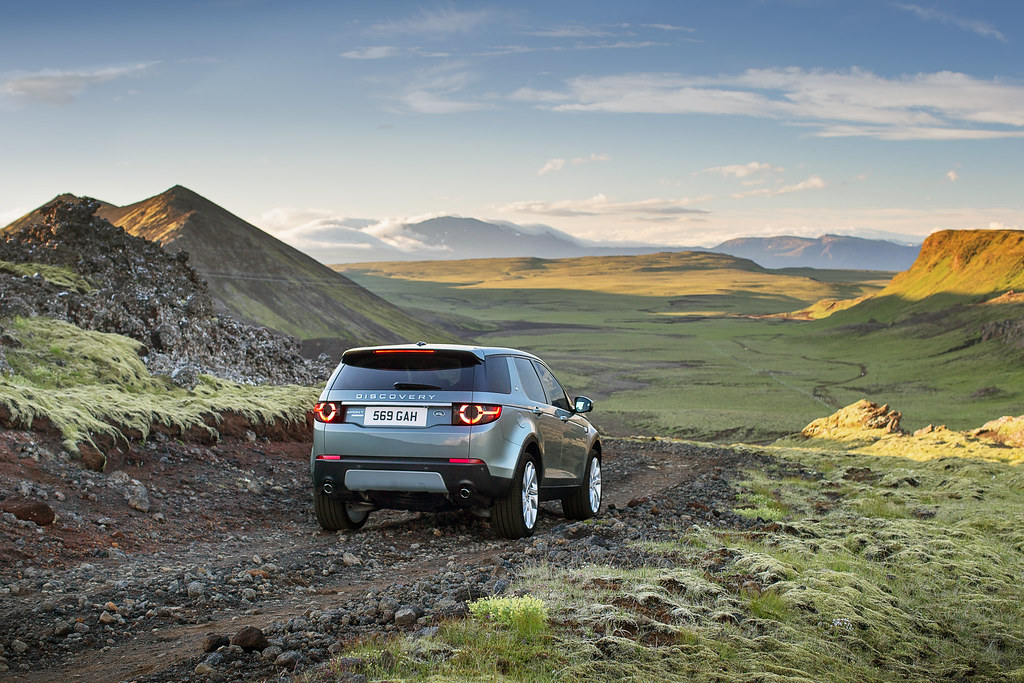
3. **Land Rover Discovery**The Land Rover Discovery is undoubtedly a handsome-looking car, blending luxury with formidable off-road capabilities that align with the brand’s rugged image. Its design often projects an image of robust adventure, making it an attractive choice for those who desire both style and substance in a premium SUV. However, this appealing exterior belies a history of reliability challenges.
Carter shared that the Land Rover Discovery “has garnered a reputation for encountering problems related to air suspension, electrical anomalies and premature transmission failure.” These are not minor issues; air suspension failures can severely impact ride quality and safety, while electrical problems can manifest in a myriad of ways, affecting various vehicle systems. Premature transmission failure, as with any vehicle, represents one of the most significant and costly mechanical breakdowns an owner can face.
Broader industry reports corroborate these model-specific concerns, indicating that the Land Rover brand as a whole often suffers from reliability issues that can tarnish its premium image. Models like the Range Rover Sport and Discovery have been flagged for problems ranging from air suspension failures to electrical glitches. Recent studies show that Land Rover ranks lower in reliability compared to other luxury SUVs, with owners frequently encountering costly repairs.
While Land Rover vehicles offer impressive capabilities and a luxurious experience, potential buyers should be prepared for the possibility of frequent and expensive visits to the repair shop. These potential costs and inconveniences could overshadow the adventure-ready appeal and premium feel of the Land Rover Discovery, making its long-term durability a significant consideration.
Car Model Information: 2024 Ford Mustang EcoBoost
Sp: uk
Name: Land Rover Discovery
Caption: 2018 Land Rover Discovery
Manufacturer: Land Rover Ltd.,Jaguar Land Rover
Production: 1989–present
Class: Executive car,Sport utility vehicle
Layout: Front-engine, four-wheel-drive
Categories: All-wheel-drive vehicles, All Wikipedia articles written in British English, All articles lacking reliable references, All articles with unsourced statements, Articles lacking reliable references from December 2010
Summary: The Land Rover Discovery is a series of five or seven-seater family SUVs, produced under the Land Rover marque, from the British manufacturer Land Rover, and later Jaguar Land Rover. The series is currently in its fifth iteration (or generation, according to the manufacturer), the first of which was introduced in 1989, making the Discovery the first new model series since the launch of the 1970 Range Rover – on which it was based – and only the third new product line since the conception of the Land Rover (vehicle and brand) by Rover in 1948. The model is sometimes called influential, as one of the first to market a true off-road capable family car.
Although the Range Rover had originally been designed as an everyday four wheel drive car that could be used as both a utility vehicle and a family car, it had progressively moved upmarket through its life to evolve into a luxury vehicle sold at a much higher price point. The Discovery was intended to fulfill the role the Range Rover originally was intended for; a segment which was now dominated by Japanese rivals such as the Nissan Patrol, Mitsubishi Pajero and Toyota Land Cruiser. Although positioned below the Range Rover in the company’s line-up, the vehicle was both longer and higher, offered more room in the back, and optionally also more seats. Space utilization became more sophisticated in later generations, but the series keeps offering seats for seven occupants. Despite originally being sold as an affordable alternative to the Range Rover, the Discovery has also progressively moved upmarket through its successive generations to become a bonafide luxury SUV.
The second Discovery (1998) was called the Series II, and although it featured an extended rear overhang, it was otherwise an extensive facelift, which carried over the 100 in (2,540 mm) wheelbase frame and rigid, live front and rear axles derived from the original Range Rover.
The third generation – succeeding the Series II in 2004 – was either called the Discovery 3 or simply LR3 (in North America and the Middle East). This was a new ground up design, the first all-original design for the Discovery. Although it followed the 2002 third generation Range Rover, also switching to fully independent suspension, it still received a separate, but integrated body and frame (IBF) structure. The fourth generation, as of 2009 – like the series II, was again mainly an update of the new generation – marketed as the Discovery 4, or Land Rover LR4 for North American and Middle Eastern markets.
The fifth generation of the Discovery, introduced in 2017, no longer sports a numeric suffix. Unlike the previous two generations, it now benefits from a unitized body structure, making it lighter than its predecessor.
Get more information about: Land Rover Discovery
Buying a high-performing used car >>>
Brand: Land Rover Model: Discovery
Price: $27,678 Mileage: 24,236 mi.
Read more about: Beyond the Lens: 8 Iconic Portraits That Ignited Global Conversations

4. **Fiat 500 / Abarth**The Fiat 500 is presented as a compact and stylish city car, celebrated for its distinctive European charm and maneuverability. Its adorable yet diminutive design has cultivated a niche following, particularly among those seeking a unique and compact urban vehicle. However, beneath its charming exterior, the Fiat 500 frequently experiences a range of engine problems that can become a significant source of frustration for owners.
Notably, the standard Fiat 500 is prone to engine problems, “notably oil leaks,” as stated by Carter. These leaks, while seemingly minor, can lead to more severe engine damage if left unaddressed. Furthermore, the limited space within the engine compartment itself contributes to the steep cost of repairs, making even routine maintenance more complicated and expensive than anticipated for a car of its size.
When considering the performance-oriented Fiat 500 Abarth, the issues amplify. This spirited model, while offering an exciting driving experience with its turbocharged engine and sporty suspension, is “notorious for experiencing frequent breakdowns and mechanical issues, especially after just a few years of ownership.” One of the most common problems reported with the Abarth is its transmission, with many owners citing issues with the dual-clutch transmission being “jerky, unresponsive, and prone to failure.” Such transmission issues are complex and costly to rectify.
Beyond the transmission, the Abarth’s suspension system, while performance-tuned, can also be prone to premature wear, leading to reduced handling capabilities over time. The 1.4-liter turbocharged engine, despite its fun performance, “can suffer from premature wear, especially if the car is driven hard or not well-maintained.” This can result in problems like oil leaks or poor compression, which are expensive to fix.
Additionally, the interior materials of the 500 Abarth are not regarded as the most durable, and the car’s small size may make it more susceptible to body damage in minor collisions. In summary, while the Fiat 500 and its Abarth variant offer undeniable charm and a lively driving experience, their collective tendency to break down prematurely makes them less reliable choices for those prioritizing long-term durability.
Car Model Information: 2012 FIAT 500 Lounge
Name: Fiat 500
Caption: 1970 Fiat 500 L
Aka: Puch 500
Manufacturer: Fiat Automobiles
Production: 1957–1975,3,893,294 units
Assembly: Turin,Desio
Designer: Dante Giacosa
Class: City car
BodyStyle: ubl
Layout: Rear-engine, rear-wheel drive layout
Doors: Suicide door,Car door#Conventional
Related: Autobianchi Bianchina,NSU/Fiat Weinsberg 500,Vignale Gamine,Autobianchi Giardiniera
Engine: Cubic centimetre,499 cc I2,594 cc I2
Transmission: Manual transmission
Wheelbase: {{convert,1840,mm,in,1,abbr=on
Abbr: on
Length: 2970 mm
Width: 1320 mm
Height: 1320 mm
Weight: 499 kg
Predecessor: Fiat 500 “Topolino”
Successor: Fiat 126,Fiat 500 (2007)
Sp: uk
Categories: 1960s cars, 1970s cars, All Wikipedia articles written in British English, All articles with unsourced statements, Articles containing Italian-language text
Summary: The Fiat 500 (Italian: Cinquecento, pronounced [ˌtʃiŋkweˈtʃɛnto]) is an economy / city car that was manufactured and marketed by Fiat Automobiles from 1957 until 1975. It was sold as a two-door semi-convertible or saloon car and as a three-door panel van or estate car.
Launched as the Nuova (new) 500 in July 1957, as a successor to the 500 “Topolino”, it was an inexpensive and practical small car. Measuring 2.97 metres (9 feet 9 inches) long, and originally powered by a rear-mounted 479 cc two-cylinder, air-cooled engine, the 500 was 24.5 centimetres (9.6 inches) smaller than Fiat’s 600, launched two years earlier, and is considered one of the first purpose-designed city cars.
In 1959, Dante Giacosa received a Compasso d’Oro industrial design prize for the Fiat 500. This marked the first time a Compasso d’Oro was awarded to an automotive manufacturer.
Get more information about: Fiat 500
Buying a high-performing used car >>>
Brand: Fiat Model: 500
Price: $5,950 Mileage: 91,698 mi.
Read more about: From Showroom Shine to Garage Grind: 15 Vehicles That Left Owners Longing for a Refund

5. **Jeep Wrangler / Cherokee**The Jeep Wrangler stands as an iconic off-road SUV, renowned for its rugged design and exceptional capabilities in tackling various terrains. It promises an enjoyable off-roading experience and a distinct sense of adventure, which has cemented its status as a beloved vehicle among enthusiasts. This vehicle is built to look tough, and in many ways, it lives up to that aesthetic promise in extreme environments.
However, its ruggedness in off-road scenarios does not entirely translate to long-term reliability in all aspects. Carter stated that while the Wrangler “offers an enjoyable off-roading experience, it’s susceptible to rust, steering and suspension problems that necessitate repair work.” These issues can significantly impact the vehicle’s structural integrity and driving dynamics, requiring frequent interventions to maintain its performance.
Broader consumer feedback and industry reports extend these concerns to other Jeep models, including the popular Cherokee. The Jeep brand, overall, often faces criticism for its reliability, with common mechanical issues including transmission problems and electrical malfunctions. These issues have been highlighted in numerous consumer feedback reports, suggesting a systemic pattern of reliability challenges across the brand’s lineup.
Despite the popularity of models like the Jeep Cherokee and Wrangler among adventure enthusiasts, they are “frequently reported for unexpected breakdowns.” Consumer reviews indicate that Jeep owners often find themselves dealing with higher maintenance costs than initially anticipated. Therefore, while their iconic status and off-road prowess are undeniable, these reliability concerns should be carefully considered by prospective buyers looking for a dependable ride that won’t incur excessive repair expenses.
Car Model Information: 2024 Jeep Wrangler 4-Door Sahara 4×4
Name: Jeep Wrangler
Caption: Jeep Wrangler Unlimited, Sahara edition
Manufacturer: Jeep
Class: Compact SUV
Production: 1986–present
Predecessor: Jeep CJ
Layout: Front-engine, rear-wheel-drive layout,rear-wheel drive
Chassis: Body-on-frame
Related: AIL Storm
Categories: 1980s cars, 1990s cars, 2000s cars, 2010s cars, All-wheel-drive vehicles
Summary: The Jeep Wrangler is a series of compact and mid-size four-wheel drive off-road SUVs manufactured by Jeep since 1986, and currently in its fourth generation. The Wrangler JL, the most recent generation, was unveiled in late 2017 and is produced at Jeep’s Toledo Complex.
The Wrangler is a direct progression from the World War II Jeep, through the CJ (Civilian Jeeps) produced by Willys, Kaiser-Jeep, and American Motors Corporation (AMC) from the mid-1940s through the 1980s. Although neither AMC nor Chrysler (after it purchased AMC in 1987) have claimed that the Wrangler was a direct descendant of the original military model — both the CJ Jeeps and the conceptually consistent Wrangler, with their solid axles and open top, have been called the Jeep model as central to Jeep’s brand identity as the rear-engine 911 is to Porsche.
Similar to the Willys MB and the CJ Jeeps before it, all Wrangler models continue to use a separate body and frame, rigid live axles both front and rear, a tapering nose design with flared fenders, a fold-flat windshield, and can be driven without doors. Also, with few exceptions, they have part-time four-wheel drive systems, with the choice of high and low gearing, and standard open bodies with removable hard or soft tops. However, the Wrangler series was specifically redesigned to be safer and more comfortable on-road, to attract more daily drivers, by upgrading its suspension, drivetrain, and interior, compared to the CJ line. The suspension on all Wranglers included trackbars and anti-roll bars, and, from the 1997 TJ onwards, front and rear coil springs instead of the previous leaf springs.
From 2004 on, the Wrangler has been complemented with long-wheelbase versions, called Wrangler Unlimited. 2004-2006 models were longer versions with 2 doors. In 2004, only automatic transmission-equipped “Unlimited” versions were sold. In 2005, both an automatic and manual 6-speed (NSG-370) were offered. Since 2007, the long-wheelbase Wranglers were four-door models, offering over 20 in (508 mm) more room. By mid-2017, the four-door models represented three-quarters of all new Wranglers on the market.
Get more information about: Jeep Wrangler
Buying a high-performing used car >>>
Brand: Jeep Model: Wrangler
Price: $43,885 Mileage: 25,348 mi.
Read more about: Beyond the Badge: Uncovering the Hidden Flaws in 14 Fan-Favorite Vehicle Models

6. **Ford Fiesta / Focus**The Ford Fiesta is a compact car admired for its agile handling and fuel efficiency, making it a popular choice for urban driving and economical transportation. It represents an attractive option for budget-conscious consumers seeking a practical and nimble vehicle. However, this initial appeal often contrasts with its long-term reliability record.
Carter noted that the Ford Fiesta “holds a track record of encountering transmission problems and electrical issues, so it might be one to avoid.” These issues are not minor; transmission problems can lead to significant drivability concerns and expensive repairs, while electrical faults can affect various critical systems within the vehicle. Such recurring problems contribute to its reputation for breaking down prematurely.
Extending this concern to another compact Ford model, the Ford Focus, similar reliability challenges emerge. The Focus, while also popular for its affordability, has a reputation for having several reliability issues, primarily centered around its PowerShift transmission. This dual-clutch transmission has been notably “prone to jerking, slipping, and hesitation, with many owners reporting these problems within the first 50,000 miles.” Ford even issued multiple recalls for this system, yet problems often persist, leading to costly repairs or replacements.
Further compounding the issues for the Ford Focus is its electrical system, with many drivers experiencing problems with wiring and sensors that affect the engine, brakes, and safety systems. These electrical failures are often difficult and expensive to diagnose and repair. Suspension issues, including worn-out struts and bushings, also contribute to a compromised ride quality over time. Both the Fiesta and Focus, despite their initial practicality, often struggle with long-term durability due to these pervasive mechanical and electrical problems, making them less-than-ideal choices for those seeking lasting reliability.
Car Model Information: 2014 Ford Fiesta SE
Name: Ford Fiesta
Manufacturer: Ford Motor Company
Production: June 1976 – July 2023
Class: Supermini
BodyStyle: hatchback
Layout: Front-engine, front-wheel-drive layout
Successor: Ford Puma (crossover)
ModelYears: 1978–1980, 2011–2019 (North America)
Categories: 1980s cars, 1990s cars, 2000s cars, 2010s cars, 2020s cars
Summary: The Ford Fiesta is a supermini car that was marketed by Ford from 1976 to 2023 over seven generations. Over the years, the Fiesta has mainly been developed and manufactured by Ford’s European operations, and had been positioned below the Escort (later the Focus).
Ford had sold over 15 million Fiestas from 1976 to July 2011, making it one of the best-selling Ford nameplates behind the Escort and the F-Series. It has been manufactured in the United Kingdom, Germany, Spain, Brazil, Argentina, Venezuela, Mexico, Taiwan, China, India, Thailand, and South Africa.
The Fiesta was discontinued in 2023, after over 22 million units had been made. The final Ford Fiesta rolled off the production line on 7 July 2023.
Get more information about: Ford Fiesta
Buying a high-performing used car >>>
Brand: Ford Model: Fiesta
Price: $6,998 Mileage: 75,861 mi.
Read more about: Beyond the Badge: Uncovering the Hidden Flaws in 14 Fan-Favorite Vehicle Models
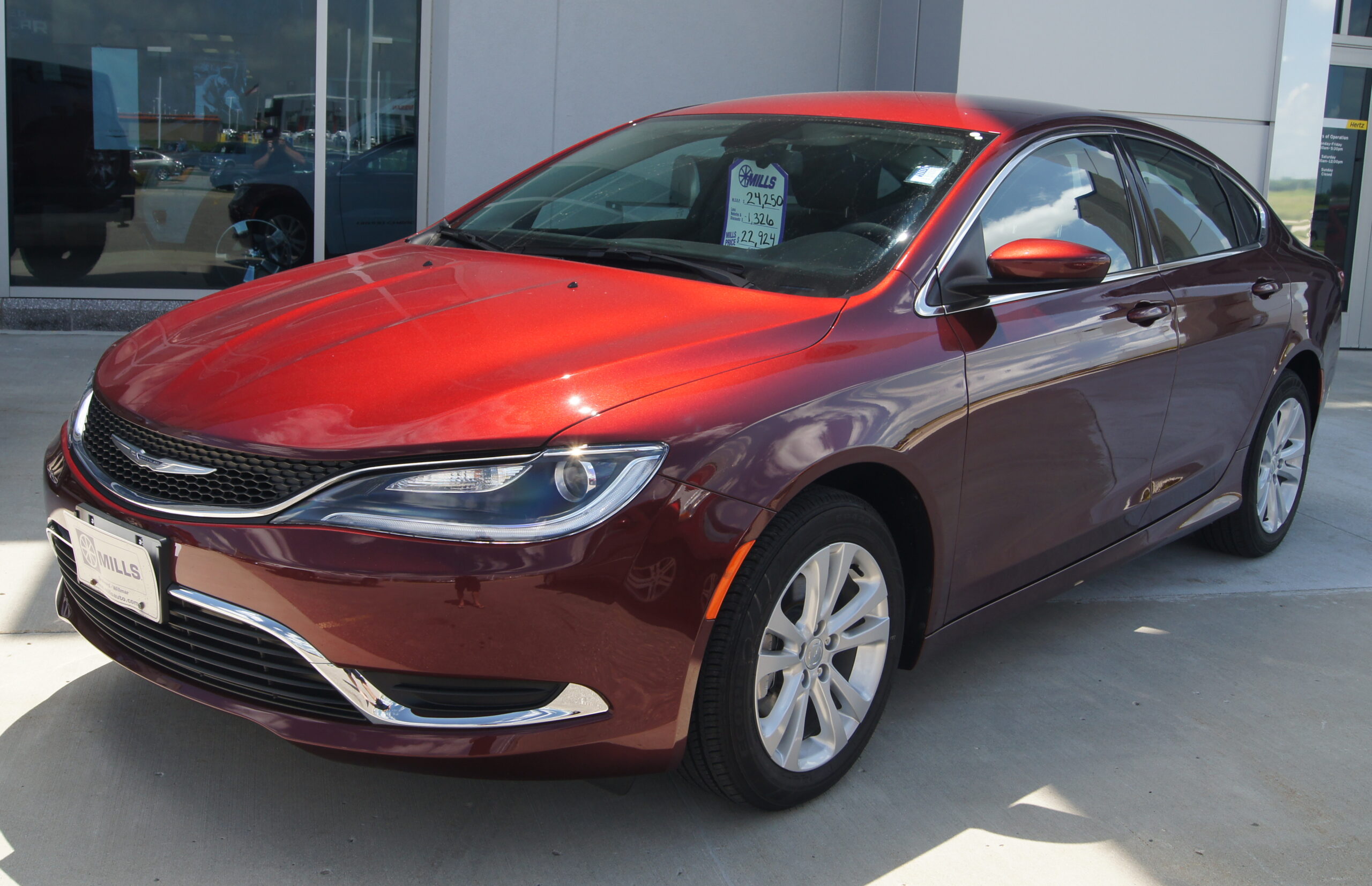
7. **Chrysler 200**The Chrysler 200 was introduced as a midsize sedan known for its sleek design and comfortable interior, aiming to offer a blend of style and practicality to consumers. Its modern aesthetics and emphasis on comfort were intended to make it a competitive option in its segment. However, despite its promising initial presentation, the Chrysler 200 quickly developed a reputation for significant reliability concerns.
According to Carter, the Chrysler 200 “has a notable frequency of engine, transmission and electrical repairs required at relatively low mileage levels.” This observation indicates that many critical components in this vehicle are prone to failure much sooner than expected, leading to unanticipated ownership costs. These issues are widespread and contribute to the vehicle’s overall poor reliability standing.
A major contributing factor to its reputation for breaking down prematurely is its transmission. The Chrysler 200 is equipped with a nine-speed automatic transmission, which has been widely reported to cause problems for many owners. Common issues include “rough shifting, delayed acceleration, and complete transmission failure.” These problems often manifest within the first 50,000 miles, placing a substantial financial and practical burden on owners through significant repair costs.
In addition to transmission woes, the Chrysler 200 has also been reported to experience engine issues, with some models suffering from faulty spark plugs, misfires, and engine stalling. These engine-related problems lead to poor performance and can necessitate expensive fixes, further contributing to the vehicle’s early decline. The suspension system has also been noted to wear out prematurely, affecting ride quality and handling.
Overall, while the Chrysler 200 offered an attractive package of comfort and style, its pervasive issues with the engine, transmission, and suspension, often at low mileages, underscore its lack of long-term durability. This makes it a vehicle that struggles to withstand the test of time, proving to be a frustrating and costly choice for many owners.
Read more about: Beyond the Badge: Uncovering the Hidden Flaws in 14 Fan-Favorite Vehicle Models
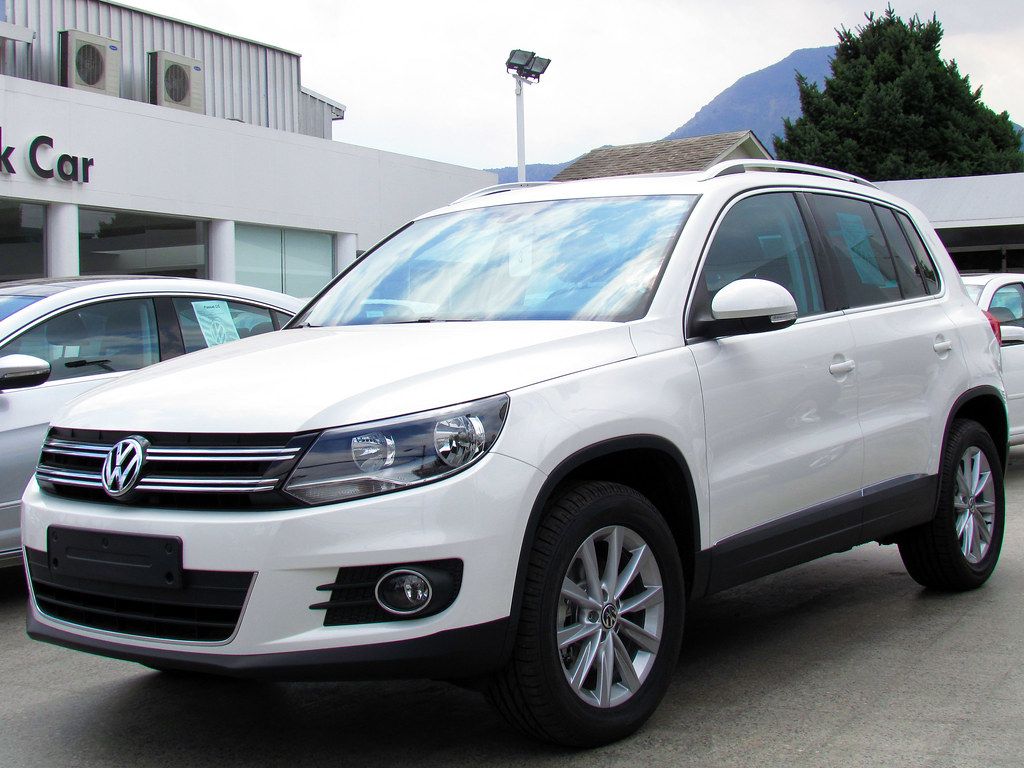
8. **Volkswagen Tiguan**The Volkswagen Tiguan presents itself as an attractive choice for consumers, combining a stylish design with a comfortable interior. This blend of aesthetics and comfort makes it appealing to those seeking a well-rounded vehicle. However, beneath its appealing surface, the Tiguan has developed a reputation for significant mechanical issues that can surface unexpectedly.
Jacob Carter, an expert in car maintenance, has highlighted that the Volkswagen Tiguan “has gained a reputation for facing costly transmission issues.” These problems are particularly concerning because they often emerge “shortly after crossing the 100,000-mile threshold.” This makes the Tiguan a vehicle that, despite its initial comfort and design, may quickly become a financial burden for owners.
Broader reliability concerns for the Volkswagen brand are also relevant, as indicated by various consumer reports. Models across the lineup, including the Jetta and Passat, have been noted for experiencing issues such as engine troubles and electrical faults. These systemic problems suggest that while Volkswagen offers a blend of performance and style, its overall breakdown frequency can be higher than expected. Such challenges demand careful consideration from potential buyers.
Therefore, while the Volkswagen Tiguan might initially impress with its looks and comfortable ride, the documented propensity for costly transmission problems and general brand reliability issues mean that long-term durability is a significant concern. Buyers prioritizing lasting reliability should thoroughly evaluate these potential drawbacks to avoid unexpected repair expenses.
Car Model Information: 2020 Volkswagen Tiguan 2.0T SEL R-Line 4MOTION
Name: Volkswagen Tiguan
Manufacturer: Volkswagen
Layout: 4motion
Class: Compact crossover SUV
BodyStyle: Sport utility vehicle
Chassis: Unibody
Production: 2007–present
ModelYears: 2009–present (North America)
Categories: 2010s cars, 2020s cars, All-wheel-drive vehicles, All Wikipedia articles written in British English, Articles with short description
Summary: The Volkswagen Tiguan (German pronunciation: [ˈfɔlksˌvaːɡn̩ ˈtiːɡu̯aːn]) is a sport utility vehicle produced by German manufacturer Volkswagen since 2007, sitting between the smaller T-Roc and the larger Touareg in the company’s crossover SUV range. The first generation was based on the PQ46 platform, while the second generation, released in 2016, utilizes the Volkswagen Group MQB A2 platform. It is generally considered to be a medium-sized SUV in Europe, while in North America it is considered to be a compact crossover SUV.
The name Tiguan is a portmanteau of the German words Tiger (“tiger”) and Leguan (“iguana”) and won a naming contest by German car magazine publisher Auto Bild—from a field of names that also included Namib, Rockton, Samun and Nanuk.
As of the spring of 2020, six million units had been sold worldwide, with 910,926 units being manufactured in 2019 alone, making the Tiguan the best-selling car overall in the Volkswagen Group. It was also the best-selling SUV in Europe.
Get more information about: Volkswagen Tiguan
Buying a high-performing used car >>>
Brand: Volkswagen Model: Tiguan
Price: $21,064 Mileage: 74,142 mi.
Read more about: Steer Clear: 11 New Popular Cars You Should Avoid at All Costs, According to Experts

9. **Mini Cooper**The Mini Cooper is widely celebrated for its compact, distinctive design and engaging driving experience, appealing to those who desire a unique vehicle. Its iconic styling and nimble handling offer a sense of individuality on the road. However, this charm is often accompanied by a range of persistent mechanical issues that can detract from the ownership experience.
According to Jacob Carter, the Mini Cooper is “plagued by persistent concerns involving oil leaks, turbo failures, suspension and electrical problems.” These are not isolated incidents but rather recurring issues that affect many owners. Oil leaks, for instance, can be indicative of underlying engine problems, potentially leading to more severe damage if not addressed promptly and effectively.
Turbo failures are another significant concern, as they can severely impact the vehicle’s performance and necessitate expensive repairs or replacements. Furthermore, issues with the suspension system can compromise ride quality and handling, leading to a less comfortable and safe driving experience over time. Electrical problems are notoriously difficult to diagnose and repair, often resulting in recurring visits to the service center and accumulated costs.
Prospective Mini Cooper buyers should be acutely aware of these documented reliability pitfalls. While the car’s unique character and driving dynamics are appealing, the likelihood of encountering frequent and costly repairs after the initial years of ownership makes it a less-than-ideal choice for those prioritizing long-term durability and trouble-free motoring.
Car Model Information: 2025 MINI Countryman S
Sp: uk
Caption: 1959 Morris Mini-Minor (first one built)
Name: Mini
Aka: Austin 850,Rover Mini,Austin Cooper,Austin Mini,Austin Partner,Austin Seven,Innocenti Mini,Leyland Mini,Morris 850,Morris Mascot,Morris Mini Minor,Riley Elf,Wolseley 1000 (South Africa),Wolseley Hornet
Layout: Front-engine, front-wheel-drive layout
Manufacturer: British Motor Corporation,British Leyland,Rover Group
Production: 1959–2000 (5.38 million)
Class: City car
BodyStyle: sedan (car),convertible,Station wagon,sedan delivery,coupe utility
Engine: BMC A-series engine,Straight-four engine
Designer: Alec Issigonis,John Sheppard (car designer)
Transmission: 4-speed manual,AP automatic transmission,5-speed manual (optional extra on some later models)
Length: cvt,cvt,cvt
Width: cvt
Height: cvt
Weight: cvt
Wheelbase: cvt,cvt
Related: Mini Moke,Austin Metro,Innocenti Mini,Mini Wildgoose,Mini Marcos
Successor: Austin Metro,Mini Hatch
Assembly: Panmure, New Zealand
Categories: 1960s cars, 1970s cars, 1980s cars, 1990s cars, 2000s cars
Summary: The Mini is a very small two-door, four-seat car, produced for four decades over a single generation, with many names and variants, by the British Motor Corporation (BMC) and its successors British Leyland and the Rover Group, and finally (briefly) under BMW ownership. Minis were built as fastbacks, estates, convertibles, and various other body styles. Minus a brief 1990s hiatus, from 1959 into 2000, an estimated 5.38 million of all variations combined were built, and the Mini’s engines also powered another 2 million Mini Metros, though the Mini eventually outlasted its successor.
Initially, the Mini was marketed under the Austin and Morris names, as the Austin Seven and Morris Mini-Minor; the Austin Seven was renamed Austin Mini in 1962 and Mini became a marque in its own right in 1969. Retrospectively, the car is known as the “Classic Mini” to distinguish it from the modern MINI family of vehicles produced since 2001 by German carmaker BMW, who took ownership of the Mini name following the sale of Rover Group in 2000.
This distinctive two-door car was designed for BMC by Sir Alec Issigonis. Its space-saving transverse engine and front-wheel drive layout – allowing 80% of the area of the car’s floorpan to be used for passengers and luggage – influenced a generation of car makers. The front-wheel-drive, transverse-engine layout were used in many other “supermini” style car designs such as Honda N360 (1967), Nissan Cherry (1970), and Fiat 127 (1971). The layout was also adapted for larger subcompact designs. In 1999, the Mini was voted the second-most influential car of the 20th century, behind the Ford Model T, and ahead of the Citroën DS and Volkswagen Beetle. It is also considered an icon of 1960s British popular culture.
The Mini Mark I had three major UK updates: the Mark II, the Clubman, and the Mark III. Within these was a series of variations, including an estate car, a pick-up, a van, and the Mini Moke, a jeep-like buggy. The performance versions, the Mini Cooper and Cooper “S”, were successful as both race and rally cars, winning the Monte Carlo Rally in 1964, 1965, and 1967. The Mini was manufactured in England at the Longbridge plant in Birmingham located next to BMC’s headquarters and at the former Morris Motors plant at Cowley, as well as in Australia (Victoria Park/Zetland BMC Australia factory) and later also in Spain (Authi), Belgium, Italy (Innocenti, as the Innocenti Mini), Chile, Malta, Portugal, South Africa, Uruguay, Venezuela, and Yugoslavia (IMV). In 1980, British Leyland launched the Mini’s follow-up, the Austin Metro, however the Mini outlasted it and continued to be produced at Longbridge until October 2000.
Get more information about: Mini
Buying a high-performing used car >>>
Brand: Mini Model: Cooper
Price: $34,979 Mileage: 14,617 mi.
Read more about: Fact vs. Fiction: 14 Historical Myths You Probably Still Believe
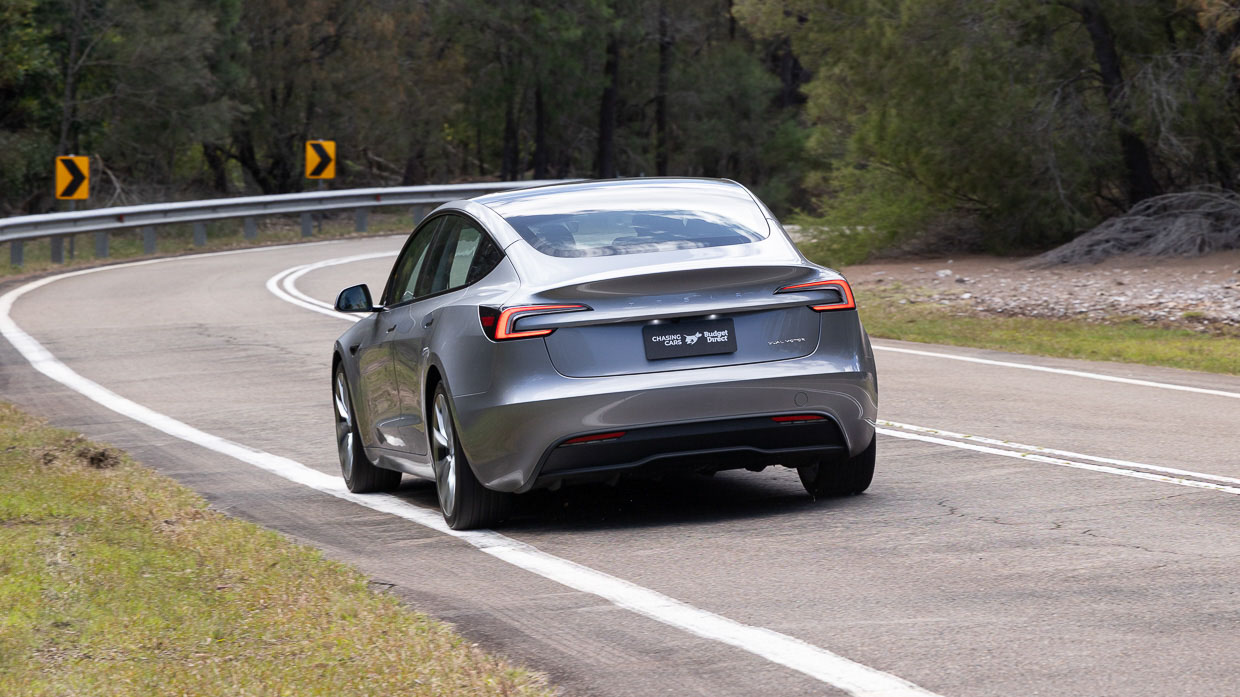
10. **Tesla Model S**The Tesla Model S stands out as a pioneering electric vehicle, celebrated for its impressive acceleration, cutting-edge technology, and innovative features. It embodies a vision of future transportation, attracting drivers with its sophisticated software and exhilarating performance. Yet, despite its advancements, owning a Model S comes with unique reliability considerations.
Jacob Carter highlights a specific financial hurdle for Model S owners: the “substantial investment for battery pack replacement.” This significant cost often becomes necessary “around or shortly after the 100,000-mile mark,” marking a critical mileage tipping point for this electric luxury vehicle. Such a replacement represents a major expense that can drastically increase the total cost of ownership.
Beyond the battery, Tesla vehicles, including the Model S, have faced broader reliability concerns stemming from their advanced technology. Issues such as software glitches and inconsistencies in build quality are frequently reported by owners. These problems, while sometimes resolved through over-the-air updates, can still lead to frustrating ownership experiences and unexpected service needs.
Electric vehicle-specific issues further contribute to these concerns. Battery degradation over time and occasional charging system failures are factors that prospective Tesla buyers must consider. While the brand excels in innovation and performance, its reliability scores have tended to lag behind more traditional automakers, making a thorough assessment of potential long-term costs crucial for informed decision-making.
Car Model Information: 2024 Hyundai SANTA FE SEL 2.4
Name: Tesla Model S
ModelYears: 2013–present
Alt: A front-three quarter view of a gray Model S
Caption: #2016–2019: First major update
Designer: Franz von Holzhausen
Weight: cvt
Height: cvt
Width: cvt
Length: cvt
Wheelbase: cvt
ElectricRange: cvt
Battery: kWh,lithium-ion battery
Motor: Unbulleted list
Transmission: Reduction drive
Related: Tesla Model X
Layout: Rear-motor, rear-wheel drive,Dual-motor, all-wheel-drive,Tri-motor, all-wheel-drive layout
BodyStyle: liftback,sedan (automobile)
Class: Full-size car
Assembly: Unbulleted list
Production: June 2012 – present
Manufacturer: Tesla, Inc.
Sp: us
Chassis: Unibody
Categories: 2020s cars, All-wheel-drive vehicles, All Wikipedia articles written in American English, All articles containing potentially dated statements, Articles containing potentially dated statements from 2025
Summary: The Tesla Model S is a battery-electric, four-door full-size car produced by the American automaker Tesla since 2012. The automaker’s second vehicle and longest-produced model, the Model S has been described as one of the most influential electric cars in the industry. Car and Driver named it one of the best cars of the year in 2015 and 2016. Its various accolades include the Motor Trend Car of the Year Award in 2013.
Tesla started developing the Model S around 2007 under the codename WhiteStar. Initially, Henrik Fisker was appointed as the lead designer for the WhiteStar project; after a dispute with Elon Musk, Tesla’s CEO, Fisker was replaced by Franz von Holzhausen. By 2008, von Holzhausen had designed what would become the production Model S’s exterior. Tesla unveiled a prototype of the vehicle in March 2009 in Hawthorne, California. In 2010, Tesla acquired a facility in Fremont, California, to produce the Model S, which was previously owned by General Motors and Toyota. Series manufacture of the car officially began at the Tesla Fremont Factory in June 2012. Tesla carried out the final assembly for European markets at its facilities in Tilburg, Netherlands, between 2013 and 2021.
The Model S typically uses either one or initially two alternating current induction motors; since 2019, dual-motor versions have used a permanent magnet motor in the front, though the high-performance Model S Plaid’s three motors are permanent magnet units by default. Constructed mostly of aluminum, the Model S shares 30 percent of its components with the Model X—a crossover SUV that was introduced in 2015. The Model S has undergone several updates during its production, the most prominent ones occurring in 2016 and 2021. These updates have usually included modifications to the motor, such as changes to power or torque, revised exterior elements, and refreshed interior features. One such change included the 2015 introduction of Tesla Autopilot—a partial vehicle automation advanced driver-assistance system.
In 2015, the Model S was the world’s best-selling plug-in electric vehicle. In 2012, it was included on Time’s list of the Best Inventions of the Year, and the magazine later included it on its list of the 10 Best Gadgets of the 2010s in 2019. In 2014, The Daily Telegraph described the Model S as a “car that changed the world”. Road & Track argued that, with the introduction of the Plaid and features such as the yoke steering wheel, Tesla managed to turn the Model S into “perhaps one of the worst [cars in the world]”.
Get more information about: Tesla Model S
Buying a high-performing used car >>>
Brand: Tesla Model: Model S
Price: $26,999 Mileage: 26,947 mi.
Read more about: Beyond the Badge: Uncovering the Hidden Flaws in 14 Fan-Favorite Vehicle Models
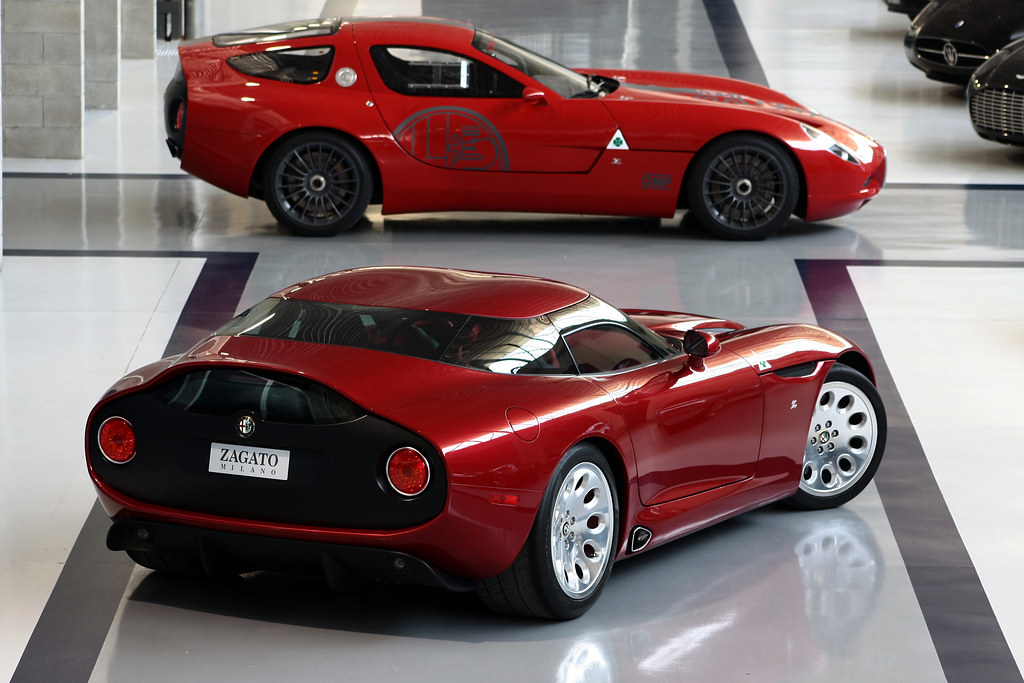
11. **Alfa Romeo**Alfa Romeo is a brand that evokes strong emotions, synonymous with exquisite Italian styling and exhilarating performance. Its vehicles, like the Giulia and Stelvio, are often praised for their captivating driving dynamics and distinctive aesthetic. However, this undeniable allure is frequently juxtaposed with persistent struggles in mechanical reliability.
Industry experts and various reports frequently cite problems with engine components and electrical systems across Alfa Romeo’s lineup. These issues can range from minor annoyances to significant failures, impacting the vehicle’s long-term dependability. While the brand delivers on driving excitement, its durability often falls short when compared to established luxury competitors such as BMW and Mercedes-Benz.
Consumer feedback consistently suggests that unexpected repairs and higher-than-average maintenance costs can be a significant downside for Alfa Romeo owners. These financial burdens often emerge sooner than anticipated, transforming a passionate purchase into a source of frustration. The complexity of these repairs, coupled with the need for specialized parts, further escalates the expenses.
Therefore, while the emotional appeal of an Alfa Romeo is undeniable, those considering purchasing one should be acutely aware of its potential reliability pitfalls. Prioritizing long-term dependability means understanding that the brand’s commitment to performance and style may not always translate into enduring, trouble-free ownership, necessitating a careful evaluation of potential repair liabilities.
Car Model Information: 2024 Hyundai SANTA FE SEL 2.4
Name: Alfa Romeo Giulia (Type 105)
Caption: Alfa Romeo Giulia Super
Manufacturer: Alfa Romeo
Production: 1962–1978
Assembly: Portello (district of Milan),Alfa Romeo Portello Plant,Milan
Designer: Giuseppe Scarnati
Class: Compact executive car
BodyStyle: notchback,Sedan (car)
Layout: Front-engine, rear-wheel-drive layout
Related: Alfa Romeo 105/115 Series Coupés,Alfa Romeo 1750 Berlina,Alfa Romeo Gran Sport Quattroruote,Alfa Romeo Spider
Engine: Alfa Romeo Twin Cam engine,1.6 L Twin Cam I4 (petrol),Perkins Engines
Transmission: Manual transmission
Wheelbase: 2510 mm
Abbr: on
Length: 4140 mm
Width: 1560 mm
Height: 1430 mm
Weight: convert
Predecessor: Alfa Romeo Giulietta (750/101)
Successor: Alfa Romeo Giulietta (116)
Sp: uk
Categories: 1970s cars, Alfa Romeo vehicles, Articles with short description, CS1 Italian-language sources (it), Cars introduced in 1962
Summary: Alfa Romeo Giulia (Italian pronunciation: [ˈdʒuːlja]) is the name of three not directly related model (line)s from Italian carmaker Alfa Romeo. The first were the four-door Type 105 entry-level compact executive sports sedans produced from 1962 to 1978; the second are the updated (mainly up-engined) Spider, Sprint, and Sprint Speciale Alfa Giuliettas, and in 2015, Alfa Romeo revived the Giulia name, again for a compact executive car (type 952).
Alfa Romeo was one of the first mainstream manufacturers to put a powerful engine in a light-weight 1 tonne (2,205 lb) four-door car for mass production. The Type 105 Giulia was equipped with a light alloy twin overhead camshaft four-cylinder engine similar to that of the earlier Giulietta (750/101) range, available in 1.3-litre (1,290 cc) and 1.6-litre (1,570 cc) versions. Various configurations of carburetors and tuning produced power outputs from about 80 to about 110 bhp (55 to 75 kW), coupled in most cases to 5-speed manual transmission.
Giulia sedans were noted for lively handling and impressive acceleration among small European four-door sedans of their era, especially considering modest engine sizes offered. The popular Super version with the twin carburettor 1.6 litre engine had a top speed of 170 km/h (106 mph) and accelerated from 0 to 100 km/h (62 mph) in about 12 seconds, better than many sports cars of the late 1960s and early 1970s. When leaving the factory all variations of the Giulia originally fitted either Pirelli Cinturato 165HR14 or 155HR15 tyres (CA67).
The styling of the three-box four-door sedan was somewhat wanting, with its three main volumes all truly square and boxy, softened only by detailing of the front and bonnet, roofline, and boot. Using a wind tunnel during development helped designers to find a remarkably aerodynamic shape with a drag coefficient of Cd=0.34, particularly low for a saloon of the era.
The Giulia Spider was succeeded by the Alfa Romeo Spider (105/115) in 1966.
Get more information about: Alfa Romeo Giulia
Buying a high-performing used car >>>
Brand: Alfa Romeo Model: Giulia
Price: $26,999 Mileage: 26,947 mi.
Read more about: Beyond the Showroom Shine: A Mechanic and Enthusiast’s Unvarnished Truth About 13 Cars and Why New Isn’t Always Better
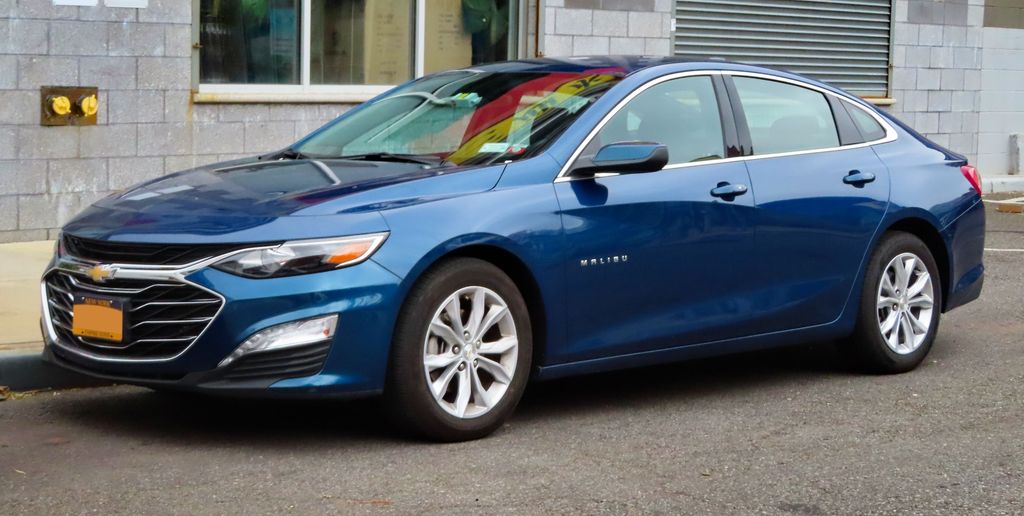
12. **Chevrolet Malibu**The Chevrolet Malibu has been positioned as a comfortable and family-friendly sedan, appealing to a broad audience with its sleek design. Its initial promise is one of practicality and modern aesthetics, making it a common sight on roads. However, its reputation for long-term durability and reliability often falls short of expectations, leading to notable ownership challenges.
Many Malibu owners have reported frequent mechanical failures, with the transmission and electrical systems being particular points of concern. These significant issues often do not manifest immediately but tend to develop after just a few years of ownership. This pattern leaves drivers contending with regular and frustrating trips to the mechanic, which quickly diminish the car’s initial appeal.
One of the most frequently cited problems is with the Malibu’s transmission. Drivers often experience issues such as slipping, jerking, or even outright transmission failure, often occurring well before the 100,000-mile mark. Such transmission issues are not only inconvenient but also lead to costly repairs, sometimes requiring a full replacement, placing a substantial financial burden on owners.
Furthermore, the Malibu’s electrical system is prone to failures, with malfunctioning sensors or wiring problems affecting critical vehicle performance. Engine concerns, including oil consumption issues, have also been reported, leading to more frequent maintenance and potential engine damage. The overall build quality and durability of interior and exterior materials also contribute to the Malibu’s struggle with longevity, making it a vehicle that, unfortunately, breaks down too easily.
Car Model Information: 2020 Chevrolet Malibu FWD LT
Name: Chevrolet Malibu
Manufacturer: Chevrolet
ModelYears: 1964–1983,1997–2025
Class: Mid-size car
Layout: Front-engine, rear-wheel-drive layout
Predecessor: Chevrolet Chevelle
Successor: Chevrolet Celebrity
Caption: Ninth generation Chevrolet Malibu
Categories: 1970s cars, 1980s cars, 1990s cars, 2000s cars, 2010s cars
Summary: The Chevrolet Malibu is a mid-size car that was manufactured and marketed by Chevrolet from 1964 to 1983 and from 1997 to 2025. The Malibu began as a trim-level of the Chevrolet Chevelle, becoming its own model line in 1978. Originally a rear-wheel-drive intermediate, GM revived the Malibu nameplate as a front-wheel-drive car in 1997.
Named after the coastal community of Malibu, California, the Malibu has been marketed primarily in North America, with the eighth generation introduced globally. Malibu production in the US ended in November 2024, as the Fairfax plant is being retooled for the upcoming second-generation Chevrolet Bolt. The Malibu is now the last sedan to have been sold by Chevrolet in the US.
Get more information about: Chevrolet Malibu
Buying a high-performing used car >>>
Brand: Chevrolet Model: Malibu
Price: $15,173 Mileage: 74,813 mi.
Read more about: Hidden Powerhouses: Unearthing 14 Underrated Pony Cars You Forgot Existed
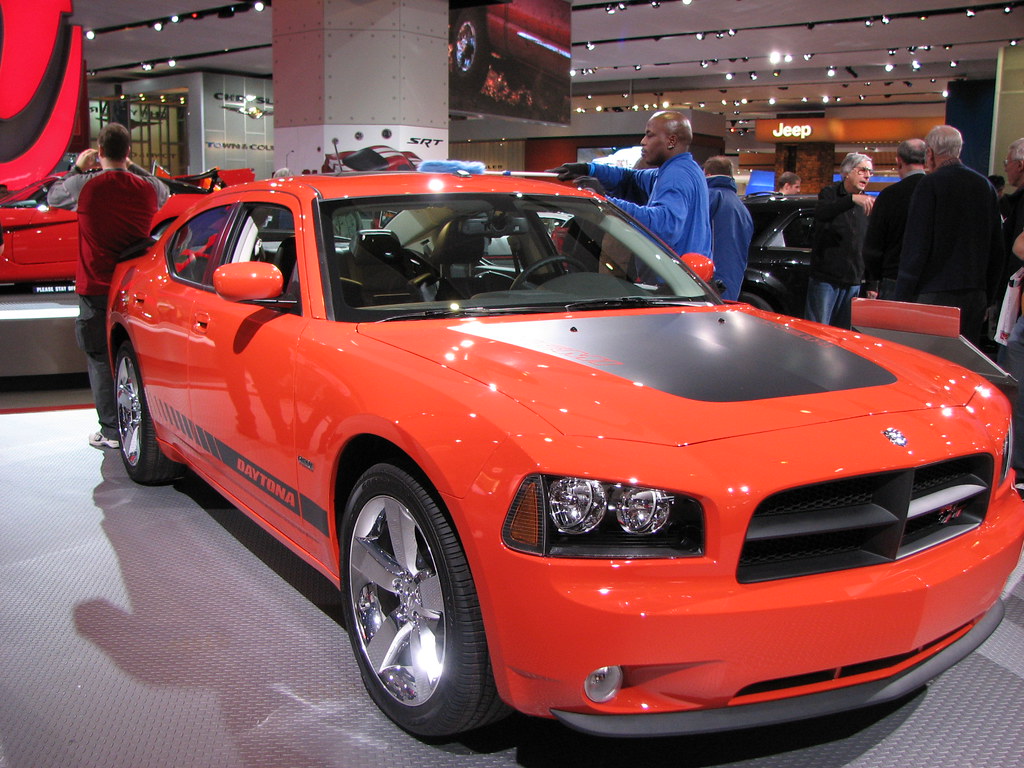
13. **Dodge**Dodge vehicles are well-known for their muscular aesthetics and powerful performance, appealing to drivers seeking a robust and dynamic driving experience. Models like the Charger and Durango embody a strong, aggressive design philosophy. However, this focus on power and style has historically been accompanied by persistent reliability challenges that continue to affect the brand.
Statistical data highlights frequent issues with critical components, specifically engine performance and braking systems, in popular models such as the Charger and Durango. These problems are not minor; they can impact both the safety and long-term functionality of the vehicle. Engine irregularities can lead to reduced performance and costly repairs, while braking system issues present immediate safety concerns.
Reports from consumer surveys provide further evidence, indicating that many Dodge owners experience a higher rate of breakdowns compared to industry averages. This suggests a systemic pattern where these powerful vehicles often require more frequent and potentially expensive repairs throughout their lifespan. These unexpected maintenance needs can significantly inflate the true cost of ownership.
Prospective buyers should carefully weigh these potential drawbacks when considering a Dodge vehicle. While their strong reputation for performance and appealing aesthetics are undeniable, the historical and ongoing reliability challenges mean that power and style might not always translate into lasting dependability. A realistic understanding of potential repair expenses is essential for an informed purchasing decision.
Car Model Information: 2023 Dodge Charger SRT Hellcat Widebody Jailbreak
Name: Dodge Charger
Caption: 1969 Dodge Charger
Manufacturer: Dodge
Production: 1966–1978,1981–1987,2005–present
ModelYears: 1966–1978,1982–1987,2006–present
Categories: 1960s cars, 1970s cars, 1980s cars, 2000s cars, 2010s cars
Summary: The Dodge Charger is a model of automobile marketed by Dodge in various forms over eight generations since 1966.
The first Charger was a show car in 1964. A 1965 Charger II concept car resembled the 1966 production version.
In the United States, the Charger nameplate has been used on mid-size cars, personal luxury coupes, subcompact hatchbacks, and full-size sedans.
Get more information about: Dodge Charger
Buying a high-performing used car >>>
Brand: Dodge Model: Charger
Price: $94,975 Mileage: 4,260 mi.
Read more about: From Showroom Shocker to Silver Screen Legend: 6 Automotive Flops That Conquered Hollywood
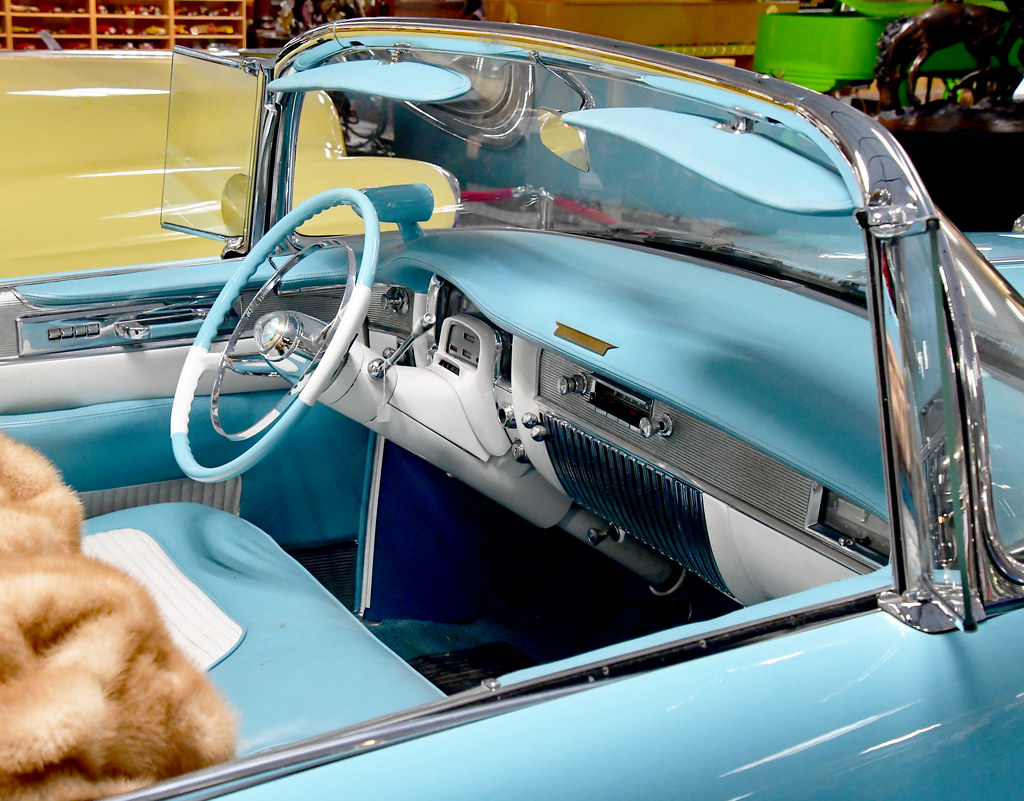
14. **Cadillac**Cadillac has long been a symbol of American luxury, offering vehicles that combine opulent interiors with a prestigious image. Models such as the Escalade and CTS are designed to deliver a premium driving experience, emphasizing comfort and sophisticated features. However, despite its luxurious standing, Cadillac often faces reliability challenges that can unfortunately tarnish this esteemed image.
Owners frequently encounter issues with electrical systems and suspension components, particularly in high-profile models like the Escalade and CTS. Electrical problems can manifest in various ways, affecting everything from infotainment systems to critical vehicle functions, often leading to complex and costly diagnostic procedures. Suspension issues, on the other hand, can compromise ride quality and require expensive component replacements to restore comfort and handling.
When Cadillac vehicles are compared to other luxury brands, such as Lexus and Audi, they tend to exhibit a higher rate of mechanical failures. This disparity in reliability is a significant factor for discerning luxury car buyers. Consumer reports consistently suggest that while Cadillac delivers on its promise of luxury and performance, the potential for breakdowns is a factor that warrants serious consideration.
Therefore, potential buyers of Cadillac vehicles should be prepared for the possibility of increased maintenance needs and unexpected repair costs. While the brand offers an attractive blend of luxury and performance, a realistic assessment of its long-term durability and the potential for frequent service visits is crucial. Choosing a Cadillac requires acknowledging that its prestigious image may come with a higher-than-average commitment to ongoing maintenance.
In the dynamic world of automotive ownership, understanding a vehicle’s long-term reliability is paramount, especially as cars age and approach significant mileage milestones. As we’ve explored throughout this comprehensive article, the initial allure of a vehicle can sometimes mask underlying durability issues that emerge around the 100,000-mile mark, transforming a dream car into a financial burden.
Our analysis, drawing on expert insights and extensive consumer data, has illuminated that not all vehicles are created equal when it comes to standing the test of time. While some brands consistently deliver enduring performance and minimal repair needs, others, despite their market appeal, are prone to premature breakdowns that can drain both your wallet and your peace of mind.
Making an informed purchasing decision goes beyond considering just the sticker price or initial features. It requires a diligent examination of a model’s track record for reliability, the common mechanical issues it faces, and the potential costs associated with maintaining it in the long run. By prioritizing durability and understanding these potential pitfalls, consumers can navigate the complex automotive market with greater confidence.
Read more about: The Revival Circuit: 12 Forgotten Concepts That Changed the Automotive Industry
Ultimately, the goal is to choose a vehicle that offers dependable transportation and lasting value, minimizing unforeseen expenses and maximizing your driving pleasure for years to come. Your next car purchase should be an investment in peace of mind, not a gamble on future repair bills.



